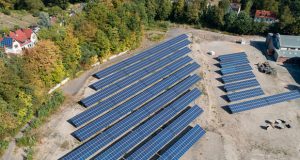Power-to-X technologies (PtX) cross boundaries, transfer energy flexibly and therefore make a sustainable contribution to reducing CO2 emissions and increasing efficiency. The integrated energy storage used for systems, mains and the market also offsets the volatility of renewable energy, thereby reducing costs significantly within the overall system.
The extraordinary potential of energy storage solutions, including for integrated energy, is currently only partially taken into account under German law. Instead, storage solutions are all classed as end consumers, which are subject to charges. The regulatory framework also does not generally recognise the reduction in CO2 emissions and the necessary planning and investment security is lacking.
Many PtX systems are already commercially and industrially available. Despite the advantages of these systems, only very few storage solutions and PtX systems are currently in place in Germany on account of regulatory conditions. In many cases, storage solutions could already satisfy the demand for flexibility more cost-effectively and in a technically more efficient manner than conventional generating plants or instruments.
The German Energy Storage Association (BVES), Berlin, is advocating a fundamental rethink away from an energy transition financed solely by the electricity sector to a fair transfer of costs to all energy products. A future energy market design must be founded on reliable framework conditions for economical integrated energy and honour the reduction of CO2 emissions. It must also respect the principle of not giving preference to certain technologies.
In its position paper, the BVES explains specific approaches to solutions for the improved economical and system-based implementation of PtX technologies, which take into account mains-based use, the intelligent use of electricity from renewable energy in times of feed-in management and the strengthening of regional approaches. Using application examples for Power-to-Gas (PtG), Power-to-Methane (PtM), Power-to-Liquid (PtL), Power-to-Heat (PtH) or Power-to-Heat-to-Power (PtHtP), the BVES demonstrates that it is already possible to implement major projects that could also be beneficial to market players outside the R&D sector.
Political mandates for action within the coalition agreement need to be put into action now in order for PtX technologies to be usable and make their important contribution to achieving climate objectives as well as realising the huge economic potential of these technologies in Germany.
The integration of the electricity, heating and mobility sectors in connection with storage technologies is a coherent and sustainable concept for energy supply in Germany, which is also capable of making the system more efficient and environmentally friendly. The primary regulatory condition for this is making the transition from a system based purely on electricity to a more holistic energy system in which energy can flow freely between the various sectors. (BVES/Si.)

